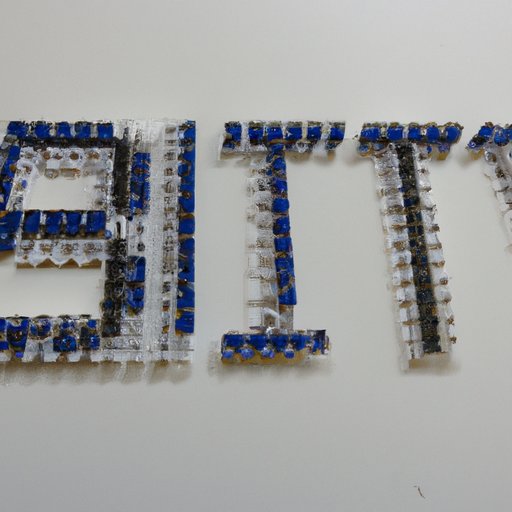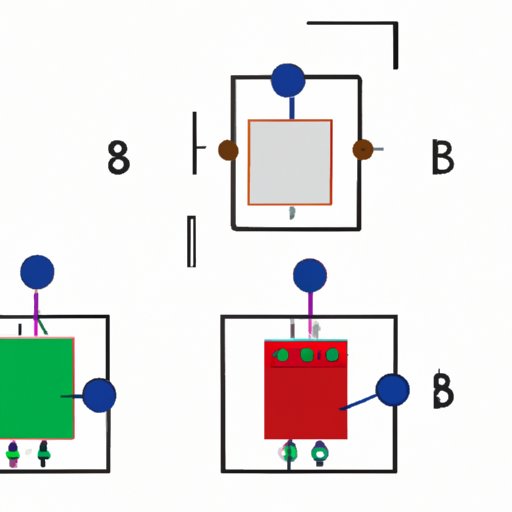Introduction
Bits are the most basic unit of information in computer science. They are used to represent data and provide instructions for computers to process and store information. In this article, we will explore what bits are in computer science, how they are used, and their role in modern computing systems.
Exploring the Basics of Bits: What are Bits in Computer Science?
Bits are the smallest unit of information in computer science. A single bit can represent either a 0 or a 1, which is known as binary. The term “bit” is derived from the phrase “binary digit.”
Definition of a Bit
A bit is a binary digit, meaning it can only have two values: 0 or 1. However, these two values can be combined to represent many different types of data. For example, a single bit can represent a letter of the alphabet, a number, or even an image.
Binary System and Bits
The binary system is a way of representing information using only two digits, 0 and 1. This type of system is used by computers because it is simple and efficient. Computers use bits to store and process information. Each bit represents a single piece of information, and multiple bits can be combined to represent more complex data.
How Bits Represent Data
Bits are used to represent data in a computer system. Each bit has a specific meaning and can be combined with other bits to form a larger set of data. For example, 8 bits can be combined to form a byte, which is the standard unit of measurement for digital data. A byte can represent a single character, such as a letter or number. By combining multiple bytes, computers can store and process more complex data, such as images, videos, and sound files.
Understanding How Bits Work in Computing and Data Storage
Bits are the building blocks of computing and data storage. To understand how computers work, it is important to understand how bits are used to represent data and how they are used to store and retrieve information.
Overview of Digital Storage
Digital storage is the process of storing data in a digital format. Computers use bits to store data on hard drives, flash drives, CDs, DVDs, and other types of media. When data is stored on a computer, it is broken down into individual bits, which are then stored in a specific order.
How Bits are Used to Store and Retrieve Data
When data is stored on a computer, it is broken down into individual bits. These bits are then arranged in a specific order to form a larger set of data. To retrieve the data, the computer reads the bits in the same order in which they were stored. This allows the computer to quickly access the data and process it accordingly.

How Bits are Used in Digital Communication and Networking
Bits are also used in digital communication and networking. In order for two computers to communicate, they must first convert the data they are sending into a digital format. This is done by breaking the data down into individual bits, which are then sent over a network. The receiving computer then reassembles the bits into the original data.
Overview of Digital Communication
Digital communication is the process of sending and receiving data over a network. This type of communication relies on computers being able to convert data into a digital format, which is then sent over the network. The receiving computer then converts the digital data back into its original form.
How Bits are Used for Networking
To send data over a network, computers must first convert the data into a digital format. This is done by breaking the data down into individual bits, which are then sent over the network. The receiving computer then reassembles the bits into the original data. This process is known as packet switching, and it is the foundation of modern networking.

An Overview of Bit Manipulation and its Applications
Bit manipulation is the process of manipulating bits to perform certain operations. Bit manipulation is used in many areas of computer science, including data compression, encryption, and error correction. In this section, we will discuss what bit manipulation is and some of its applications.
What is Bit Manipulation?
Bit manipulation is the process of manipulating bits to perform certain operations. This can include changing the value of a bit, shifting bits, and performing logical operations on bits. Bit manipulation is used to perform a variety of tasks, such as compressing data, encrypting data, and correcting errors.
Examples of Bit Manipulation
One example of bit manipulation is data compression. Data compression is the process of reducing the size of a file without losing any of its content. Compression algorithms use bit manipulation to reduce the size of a file by removing redundant bits. Another example of bit manipulation is encryption. Encryption algorithms use bit manipulation to scramble and unscramble data, making it unreadable to anyone without the proper key.
Benefits of Bit Manipulation
Bit manipulation has many benefits. It can be used to compress data, making it easier to store and transfer. It can also be used to encrypt data, making it secure and unreadable to anyone without the proper key. Bit manipulation can also be used to correct errors in data, ensuring that the data is accurate and reliable.
Examining the Different Types of Bits and Their Uses
There are many different types of bits that can be used in computer science. Each type of bit has its own purpose and can be used for a variety of tasks. In this section, we will examine some of the common types of bits and how they are used.
Overview of Common Types of Bits
There are several common types of bits that are used in computer science. Some of the most common types of bits include logic bits, memory bits, register bits, and control bits. Each type of bit has its own purpose and is used for different tasks.
How Different Bits are Used
Logic bits are used to perform logical operations on data. Memory bits are used to store data in a computer’s memory. Register bits are used to store data in a processor’s registers. Control bits are used to control the flow of data within a computer system. Each type of bit serves a different purpose and can be used for various tasks.

Analyzing the Role of Bits in Modern Computing Systems
Bits are the foundation of modern computing systems. They are used to store and process data, as well as to communicate and network. In this section, we will examine the role of bits in modern computing systems.
Introduction to Modern Computing Systems
Modern computing systems rely on bits to store and process data. These systems use a combination of hardware and software to accomplish tasks. The hardware consists of processors, memory, storage devices, and other components. The software includes operating systems, applications, and other programs.
How Bits are Used in Modern Computing Systems
In modern computing systems, bits are used to store and process data. Bits are used to represent data in a computer’s memory and are used to communicate between components. Bits are also used to control the flow of data within a system. Without bits, modern computing systems would not be able to function properly.
Conclusion
Bits are the foundation of computer science and are used to store and process data. They are used in digital storage, communication, networking, and modern computing systems. There are many different types of bits, each with its own purpose and use. By understanding what bits are and how they are used, we can better understand how computers work and how they are used in modern computing systems.
(Note: Is this article not meeting your expectations? Do you have knowledge or insights to share? Unlock new opportunities and expand your reach by joining our authors team. Click Registration to join us and share your expertise with our readers.)
